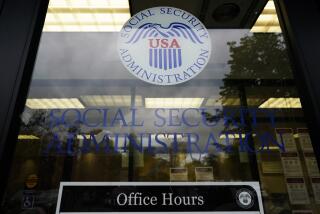Can You Afford This House? The Cost Is More Than the Price Alone
- Share via
Q: My husband and I just turned 28, and we are eager to purchase our first home. We have managed to save $40,000 in a money market account and approximately $30,000 in stocks and in our 401(k)s. We are very conservative buyers who have just been pre-approved for a $300,000 loan with 10% down. Is this too ambitious for an income of $86,000? Do we have enough in our reserve for a down payment and for an emergency fund if we buy today? We want to be living comfortably and be able to afford our mortgage payments.
*
A: You’re right to feel a little queasy.
While your mortgage payments might meet the lender’s definition of what you can afford, the other costs of buying a home might be more than you can comfortably handle right now.
First of all, you should count on closing costs, moving expenses and other fees equal to 3% to 5% of your home’s value. Combined with your down payment, that would wipe out your money market account and force you to dip into your stocks or 401(k)--not a good idea if you also want to retire someday. And that would be just the beginning of your home buying expenses.
You should count on spending at least 1% of the value of your home each year on maintenance and improvements. Some years the costs will be less, but some years it will be more, thanks to a leaky roof or a remodeling project. You’re better off saving that money in advance than having to scramble at the last minute or add to your debt load.
Obviously, people spend more than they should on houses every day, and many people simply expect to be “house poor” for a few years after buying a home. But if you’re conservative and concerned about living comfortably, consider renting a while longer and adding to your savings. At the very least, you should plan to have an emergency fund of $10,000 or so after all home-buying costs are considered. If you save enough for a 20% down payment, you can avoid the added monthly costs of private mortgage insurance.
Your eagerness to have your own nest is understandable, and rising home prices can make you feel pressured to buy now. But there are far worse things than renting. Talk to any couple who bought a home at the last market peak and wound up trapped in homes worth less than their mortgages.
Husband’s Liabilities Are Wife’s Risk
Q: My husband and I have separate credit lines (credit cards, etc.). I have very little debt because I don’t buy it if I can’t afford to pay for it. He has a significant amount of debt, which worries me. What is my liability if something happens to him, and what steps can I take to protect our family’s financial health?
*
A: Chances are, your husband doesn’t have a significant amount of debt. You both do.
It’s pretty difficult to have his and hers debt in California. You’re probably on the hook for every dollar he’s spent that he couldn’t pay for. And yes, it is putting your family’s financial health at risk. Every dollar that’s going to interest payments is a dollar that’s not being invested for your shared future.
You could load up on life and disability insurance for him in the grim hope that some catastrophe will bail you out. (You should have such insurance anyway, especially if you have a mortgage payment that you couldn’t make without his income.) But more importantly, the two of you need to get on the same page financially and stop pretending you’re still single, with the single person’s ability to make financial decisions without consultation and compromise.
If you need some help, check out “Couples and Money: A Couples’ Guide Updated for the New Millennium” by Victoria Collins ($13.95, Gabriel Books).
A Credit Card for Funds Transfers
Q: As a follow-up to your Jan. 24 column about using a credit card for automatic electronic funds transfers to pay utility bills and other regular charges: I discovered a glitch with using credit card EFTs after my card was stolen. I canceled the account and was issued a new card, but for the next 10 months I received nasty letters from service providers who had not been paid; some canceled their services rather than notifying me. The solution: I got a second credit card that I use exclusively for EFTs. The card is in a safe deposit box so that it cannot be lost or stolen.
*
A: Ah, yes. Another example of the greater ease and efficiency brought to our lives by electronic funds transfers.
Your solution is a smart one. You actually don’t even have to bother with the safe deposit box; you could simply destroy the card. You rarely, if ever, need it to set up EFTs anyway. All that you need is the account number and expiration date.
Timely Tip
Thinking about buying a home or refinancing? You can use the interactive calculators at https://ukobiw.net/HOME/CLASS/REALEST/to see what your payments would be, how much mortgage you can get, how much you should put down and whether renting or buying would be the better option.
*
Liz Pulliam is a personal finance writer for The Times. She will answer questions submitted--or inspired--by readers on a variety of financial issues in this column. Questions can be sent to her at [email protected] or mailed to her in care of Money Talk, Business Section, Los Angeles Times, Times Mirror Square, Los Angeles, CA 90053.
More to Read
Inside the business of entertainment
The Wide Shot brings you news, analysis and insights on everything from streaming wars to production — and what it all means for the future.
You may occasionally receive promotional content from the Los Angeles Times.










